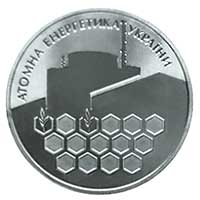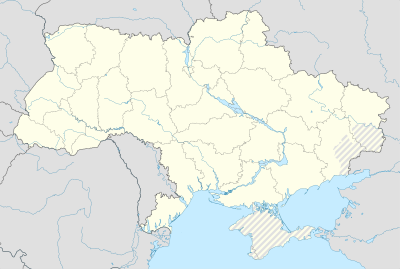
The Jaslovské Bohunice Nuclear Power Plant (NPP) is a complex of nuclear reactors situated 2.5 km from the village of Jaslovské Bohunice in the Trnava District in western Slovakia.

The Chernobyl Nuclear Power Plant is a nuclear power plant undergoing decommissioning. ChNPP is located near the abandoned city of Pripyat in northern Ukraine, 16.5 kilometers (10 mi) northwest of the city of Chernobyl, 16 kilometers (10 mi) from the Belarus–Ukraine border, and about 100 kilometers (62 mi) north of Kyiv. The plant was cooled by an engineered pond, fed by the Pripyat River about 5 kilometers (3 mi) northwest from its juncture with the Dnieper.

Rosatom, also known as Rosatom State Nuclear Energy Corporation, the State Atomic Energy Corporation Rosatom, or Rosatom State Corporation, is a Russian state corporation headquartered in Moscow that specializes in nuclear energy, nuclear non-energy goods and high-tech products. Established in 2007 and comprising more than 350 enterprises, including scientific research organizations, a nuclear weapons complex, and the world's only nuclear icebreaker fleet.
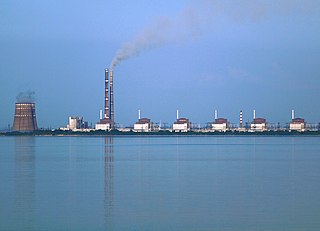
The Zaporizhzhia Nuclear Power Station in southeastern Ukraine is the largest nuclear power plant in Europe and among the 10 largest in the world. It has been under Russian control since 2022. It was built by the Soviet Union near the city of Enerhodar, on the southern shore of the Kakhovka Reservoir on the Dnieper river. It is operated by Energoatom, who operate Ukraine's other three nuclear power stations.

The Kozloduy Nuclear Power Plant is a nuclear power plant in Bulgaria situated 180 kilometres (110 mi) north of Sofia and 5 kilometres (3.1 mi) east of Kozloduy, a town on the Danube river, near the border with Romania. It is the country's only nuclear power plant and the largest in the region. The construction of the first reactor began on 6 April 1970.

The water-water energetic reactor (WWER), or VVER is a series of pressurized water reactor designs originally developed in the Soviet Union, and now Russia, by OKB Gidropress. The idea of such a reactor was proposed at the Kurchatov Institute by Savely Moiseevich Feinberg. VVER were originally developed before the 1970s, and have been continually updated. As a result, the name VVER is associated with a wide variety of reactor designs spanning from generation I reactors to modern generation III+ reactor designs. Power output ranges from 70 to 1300 MWe, with designs of up to 1700 MWe in development. The first prototype VVER-210 was built at the Novovoronezh Nuclear Power Plant.

Generation III reactors, or Gen III reactors, are a class of nuclear reactors designed to succeed Generation II reactors, incorporating evolutionary improvements in design. These include improved fuel technology, higher thermal efficiency, significantly enhanced safety systems, and standardized designs intended to reduce maintenance and capital costs. They are promoted by the Generation IV International Forum (GIF).
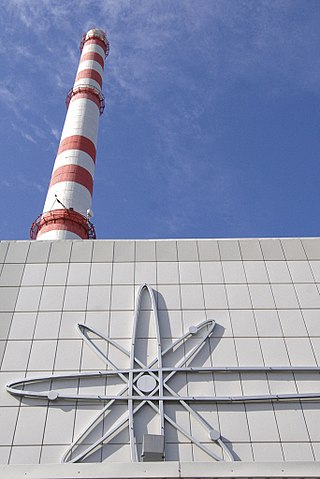
Russia is one of the world's largest producers of nuclear energy. In 2020 total electricity generated in nuclear power plants in Russia was 215.746 TWh, 20.28% of all power generation. The installed gross capacity of Russian nuclear reactors is 29.4 GW in December 2020.
State Enterprise National Nuclear Energy Generating Company "Energoatom", commonly known as just Energoatom, is a state enterprise operating all four nuclear power plants in Ukraine. It is the largest power producer in Ukraine.

The Kursk Nuclear Power Plant is a nuclear power plant located in western Russia on the bank of the Seym River about 40 kilometers west of the city of Kursk. The nearby town of Kurchatov was founded when construction of the plant began. The plant feeds the grid for Kursk Oblast and 19 other regions.

The South Ukraine Nuclear Power Plant, also known as the Pivdennoukrainsk Nuclear Power Plant, is a nuclear power plant in Ukraine, near the city of Yuzhnoukrainsk in Mykolaiv Oblast, about 350 kilometres (220 mi) south of Kyiv. It is the second largest of the country's five nuclear power stations. It is part of the South Ukrainian Energy Complex, along with the Tashlyk Pumped-Storage Power Plant and Oleksandrivska hydroelectric power station.

China is one of the world's largest producers of nuclear power. The country ranks third in the world both in total nuclear power capacity installed and electricity generated, accounting for around one tenth of global nuclear power generated. As of February 2023, China has 55 plants with 57GW in operation, 22 under construction with 24 GW and more than 70 planned with 88GW. About 5% of electricity in the country is due to nuclear energy. These plants generated 417 TWh of electricity in 2022 This is versus the September 2022 numbers of 53 nuclear reactors, with a total capacity of 55.6 gigawatt (GW). In 2019, nuclear power had contributed 4.9% of the total Chinese electricity production, with 348.1 TWh.

The Astravets Nuclear Power Plant is a nuclear power plant located in the Astravyets District, Grodno Region in north-western Belarus. The power plant is built close to the Belarus-Lithuania border, being 40 kilometres (25 mi) east of the Lithuanian capital of Vilnius. The plant is powered by two 1194-MW VVER-1200 units supplied by Atomstroyexport, the nuclear equipment exporter branch of the Russian nuclear corporation Rosatom. The plant is owned by State Enterprise Belarusian NPP, which in turn is owned by the state-owned operator Belenergo.

The Khmelnytskyi Nuclear Power Plant is a nuclear power plant in Netishyn, Khmelnytskyi, Ukraine. The plant is operated by Energoatom. Two VVER-1000 reactors are operational, each generating 1000 MW (net) of electricity.
President Adly Mansour announced on 7 November 2013 that Egypt was restarting its nuclear power program in El Dabaa; a deal was reached with the residents in which it was agreed that a residential area will also be built. The Egyptian minister of electricity, Ahmed Emam, has called the project "necessary" because of a small amount of renewable energy sources and not enough fuel.

Energy in Ukraine is mainly from gas and coal, followed by nuclear and oil. The coal industry has been disrupted by conflict. Most gas and oil is imported, but since 2015 energy policy has prioritised diversifying energy supply.

The Rooppur Nuclear Power Plant (Bengali: রূপপুর পারমাণবিক বিদ্যুৎকেন্দ্র) is a 2.4 GWe nuclear power plant project in Bangladesh. The nuclear power plant is being constructed at Rooppur of Ishwardi upazila in Pabna District, on the bank of the river Padma, 87 miles (140 km) west of Dhaka. It will be the country's first nuclear power plant, and the first of the two units is expected to go into operation in 2024. The VVER-1200/523 Nuclear reactor and critical infrastructures are being built by the Russian Rosatom State Atomic Energy Corporation. In the main construction period, the total number of employees will reach 12,500, including 2,500 specialists from Russia. It is expected to generate around 15% of the country's electricity when completed.
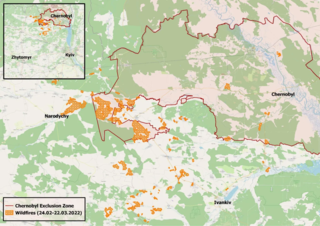
Ukraine is home to four nuclear power plants, as well as the Chernobyl Exclusion Zone, site of the 1986 Chernobyl disaster. As of January 2024, both the Chernobyl and the Zaporizhzhia nuclear power plants saw battles during the war that resulted from the 2022 Russian invasion of Ukraine. The invasion has prompted significant discussion about the status of the power plants, including fears of potential disasters, and has also prompted debates about nuclear energy programmes in other European countries.

During the Russian invasion of Ukraine, the Zaporizhzhia Nuclear Power Plant has become the center of an ongoing nuclear safety crisis, described by Ukraine as an act of nuclear terrorism by Russia.





